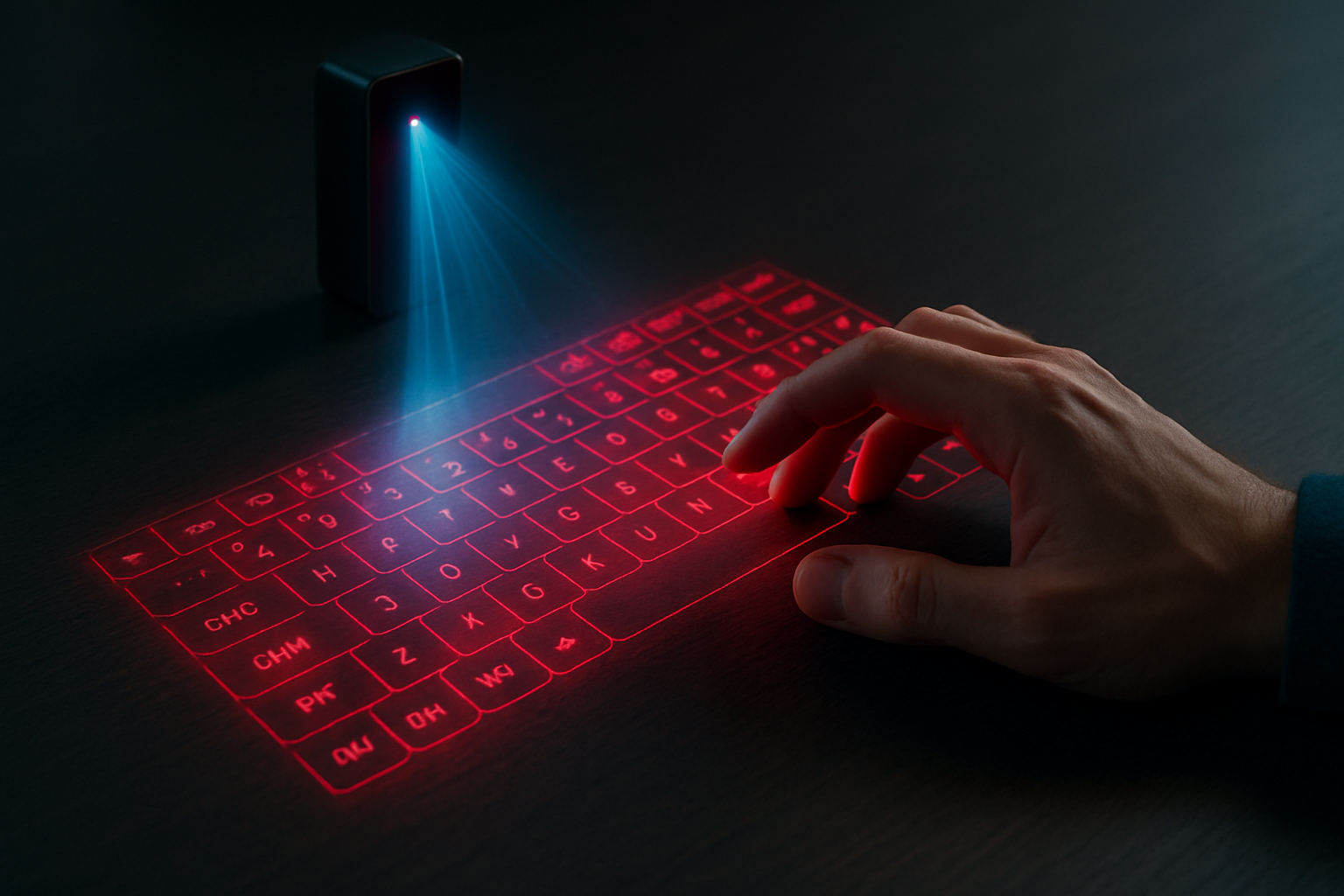Holographic Keyboards: The Next Frontier in Mobile Computing
In a world where portability and functionality are paramount, a revolutionary input device is poised to transform how we interact with our mobile devices. Holographic keyboards, once the stuff of science fiction, are now on the brink of becoming a tangible reality. This cutting-edge technology promises to merge the tactile experience of typing with the convenience of projection, potentially reshaping our expectations of mobile computing interfaces.

These initial forays were plagued by issues such as poor accuracy, lack of tactile feedback, and the need for specific lighting conditions. However, they laid the groundwork for the more sophisticated systems we’re seeing emerge today.
How Modern Holographic Keyboards Work
Contemporary holographic keyboard technology has made significant strides. The latest iterations utilize a combination of advanced projection systems, depth-sensing cameras, and machine learning algorithms to create a more reliable and responsive typing experience.
The core components typically include a miniature projector, which casts the image of a keyboard onto a flat surface, and a sensor array that tracks the user’s finger movements with incredible precision. Some systems even incorporate haptic feedback mechanisms, using targeted soundwaves or air pulses to simulate the feel of pressing physical keys.
The Advantages of Going Holographic
The potential benefits of holographic keyboards are numerous. First and foremost is the space-saving aspect. In an era where device manufacturers are constantly striving to reduce bulk and weight, a keyboard that can be summoned and dismissed at will is incredibly appealing.
Moreover, holographic keyboards offer unparalleled flexibility. Users can adjust the size and layout of the keyboard to suit their preferences or the constraints of their environment. This adaptability extends to language support as well, with the ability to switch between different character sets instantaneously.
Challenges and Limitations
Despite the promise, holographic keyboards face several hurdles before widespread adoption becomes feasible. One of the most significant challenges is achieving typing speeds and accuracy comparable to physical keyboards. While recent advancements have improved performance, many users still report a learning curve and reduced typing efficiency.
Environmental factors also play a crucial role. Bright ambient light can interfere with the projection, potentially rendering the keyboard unusable in outdoor settings. Additionally, the need for a flat, stable surface limits where these keyboards can be effectively used.
Real-World Applications and Market Potential
The market for holographic keyboards is still in its infancy, but industry analysts project significant growth in the coming years. Early adopters are likely to be professionals who frequently work on the go, such as journalists, field technicians, and business travelers.
Several tech startups and established companies are investing heavily in this technology. While exact pricing for consumer-ready products is yet to be determined, estimates suggest that early commercial versions could range from $200 to $500, potentially decreasing as the technology matures and production scales up.
The Future of Input: Beyond Keyboards
As exciting as holographic keyboards are, they represent just one facet of the evolving landscape of human-computer interaction. Researchers are already exploring more advanced concepts, such as neural interfaces and gesture-based controls, which could further revolutionize how we input data and control our devices.
However, the familiarity and efficiency of the QWERTY layout mean that keyboard-like interfaces are likely to remain relevant for the foreseeable future. Holographic keyboards could serve as a bridge between traditional input methods and more radical future technologies.
Conclusion: A Glimpse into Tomorrow’s Tech
Holographic keyboards stand at the intersection of nostalgia and innovation, offering a glimpse into a future where our interactions with technology become increasingly seamless and intuitive. While challenges remain, the rapid pace of technological advancement suggests that these futuristic input devices may soon become a common sight in coffee shops, offices, and homes around the world.
As we continue to push the boundaries of what’s possible in mobile computing, holographic keyboards remind us that the future we once imagined in science fiction is closer than ever before. The next time you tap away on your smartphone’s cramped virtual keyboard, remember that a more spacious, adaptable, and yes, holographic alternative may be just around the corner.





